Being a loyal NO FRILLS SAILING.com reader you probably would have guessed it: I am currently on the Canary Islands. For me and my family spending winter time on these Spanish islands is not just a nice tradition but something we have woven into our lives. These “Islands of everlasting Spring” are not just replenishing our empty batteries (especially due to the Corona-craze) but after so many years coming here a place we legitimately can call home. I am especially happy for my kids who not only love the islands but are learning so much here that we as parents can´t even grasp now.
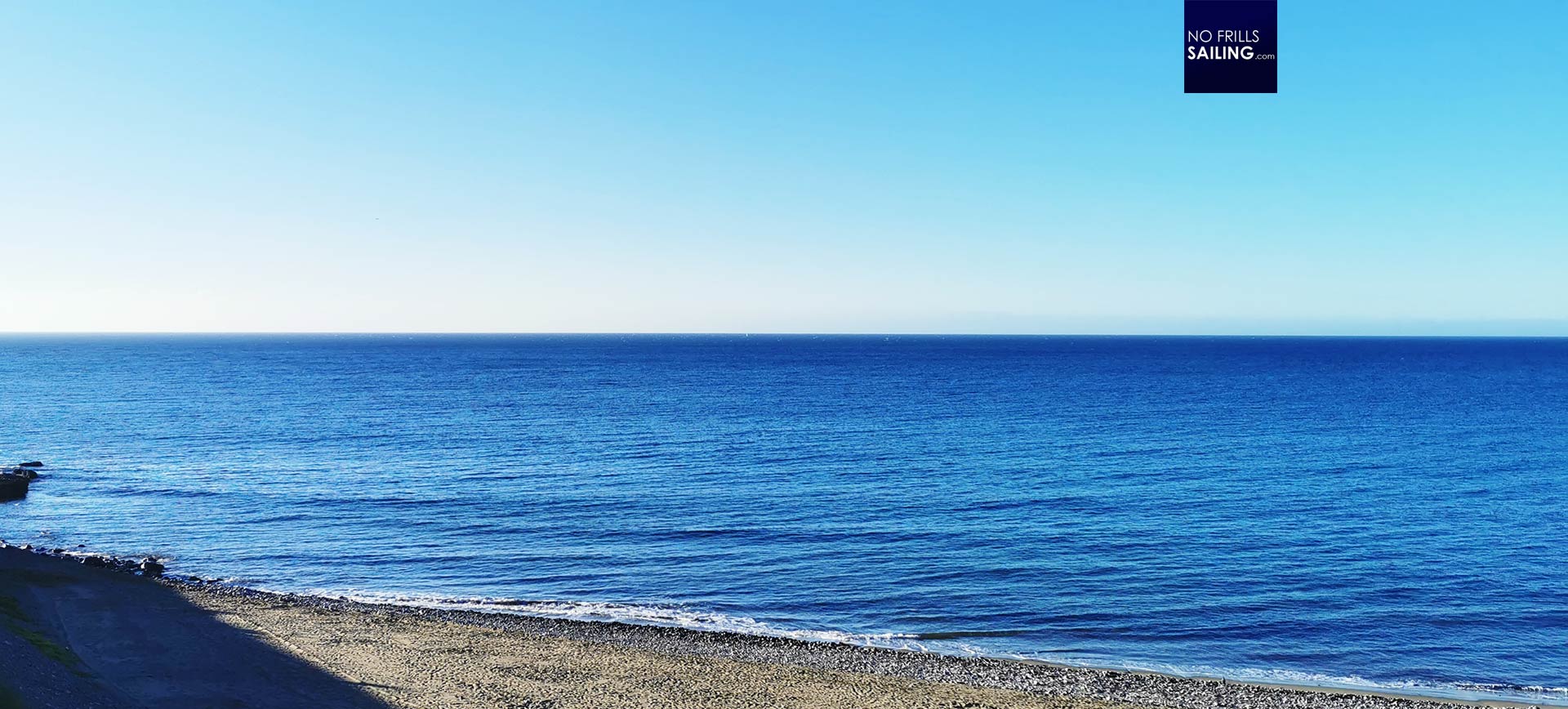
One thins we´ve learned today during our traditional morning hike moving and touching. I want to share this story because it encompasses everything from sailing lessons to kid´s imagination. Something I push my kids to develop: Creativity paired with knowledge. Now, let´s come with us on our morning adventure hike …
Look what has happened during our morning hike
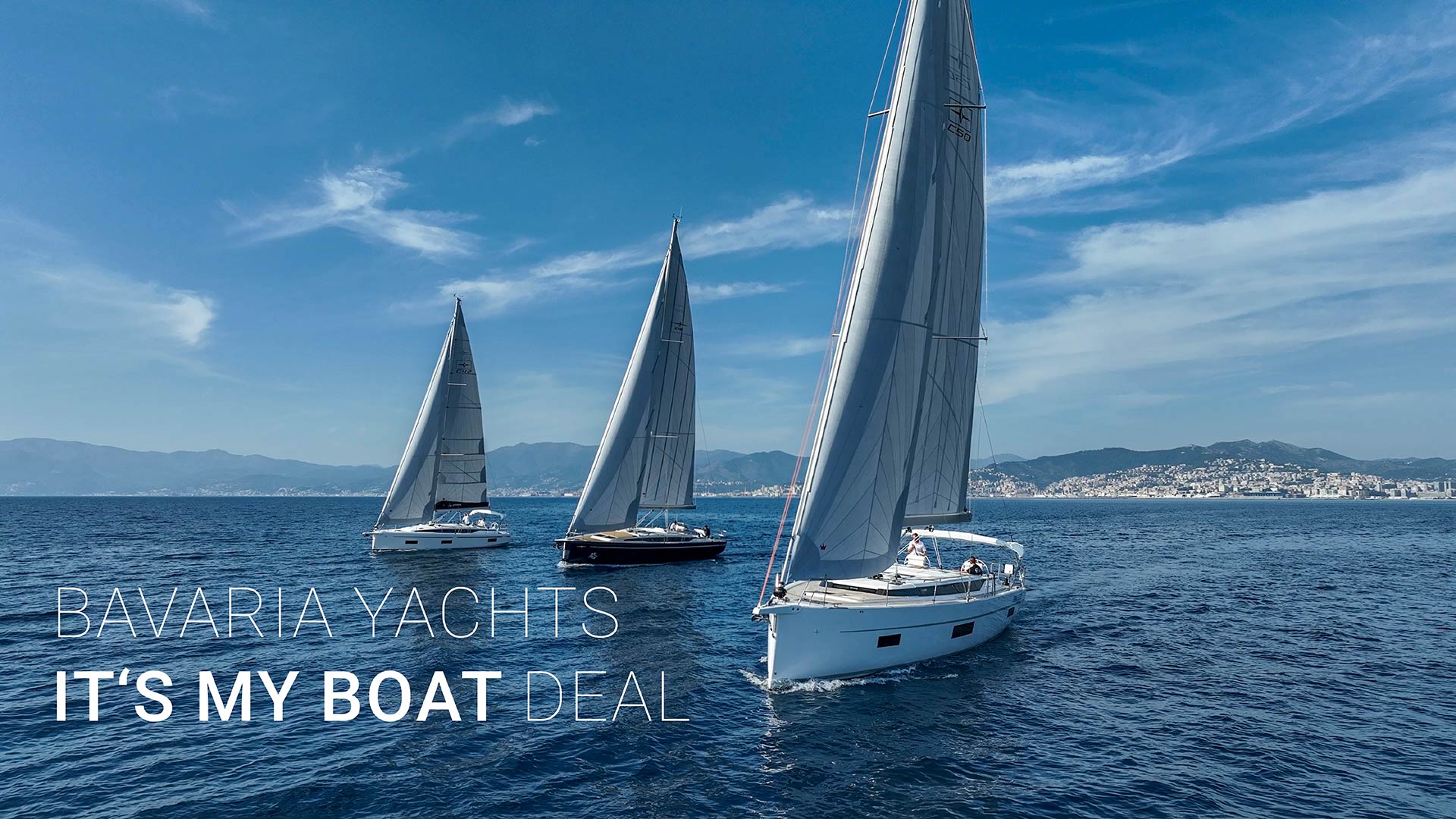
The evening before, we were out again for a little star watching walk, I pointed to the nearby marina, Pacito Blanco, where in the last daylight I could see some boats at anchor right in front of the marina´s entrance. I asked my kids what was missing on those anchoring boats and explained that, according to Colreg (the international rules for preventing collisions) anchoring vessels should have their top-light white set. I found it odd that none of these boats had their anchor lights activated. Well, so we walked along the rugged rocky coast to Pacito Blanco Marina, as my boys suddenly stopped: “Daddy, look!”, they yelled.
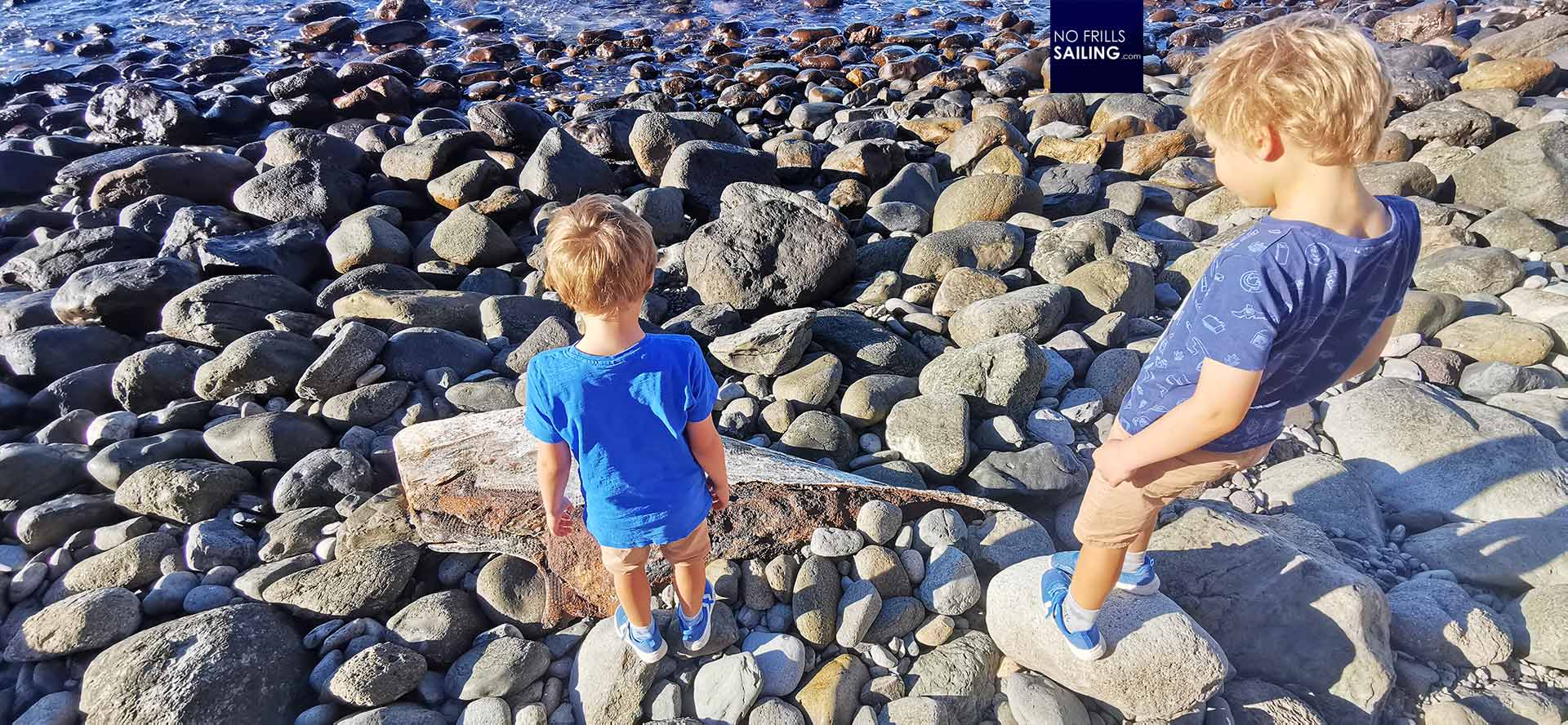
At first they thought it was some kind of big dead fish (we´ve found a rotten seal, which apparently has made a deep impact on my kids) but by inspecting more closely it quickly resembled the all-too familiar shape of a boat´s integral part. “This is a torn off keel”, I explained. The chunk must have been was laying there for months if not a few years at least as it was heavily beaten and grinded down by violent waves on the rocky shore but also has already developed huge corrosion effects. I urged the boys to come up with some ideas how the keel could have ended up here at the shore.
What kind of boat might this have been?
“What is a keel?”, they asked. And so I was able to explain that every sailboat needs a keel, what it was for and why it needs to be so heavy. We checked the remainder of this boat we looked at the size and from it could guess the size of the boat. Probably 30 to 35 feet I would say, a classy fin-keeled GRP built boat, similar to my old OLIVIA, as my son rightfully mentioned.
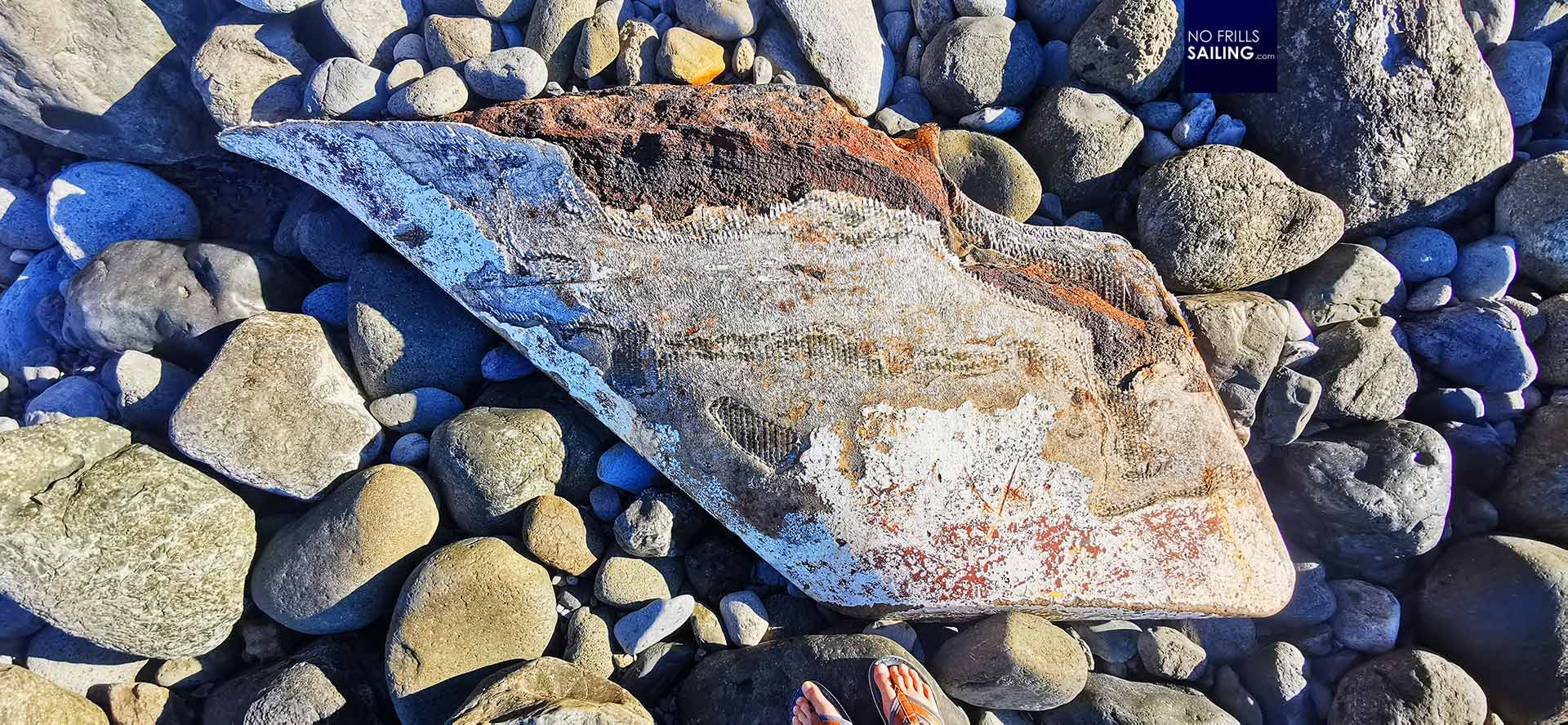
We touched the keel and learned more about the construction of it. To achieve the most mass in the ballast down underneath the boat´s hull, the main ingredient of such a keel was iron. Cast iron, I specified and my kids began to knock on the material: “It sounds like metal!”, they confirmed. My younger son had the idea to check for sound by knocking with a stone on the iron part. Touching the outer, already heavily eaten away, shell, they discovered that it was “softer” and could be bent.
Learning from desaster
“These are many layers of a glass fiber net, a garment of it.”, I explained. “It is kind of glued onto the raw cast iron keel by hand and forms a protective shell.” To prevent the cast iron keel from rusting away – as we could clearly see here – it needs to be sealed with a waterproof layer. Also, I explained, by sanding the GRP-sheel it is made nice and smooth to allow an unspoiled flow of water around it.
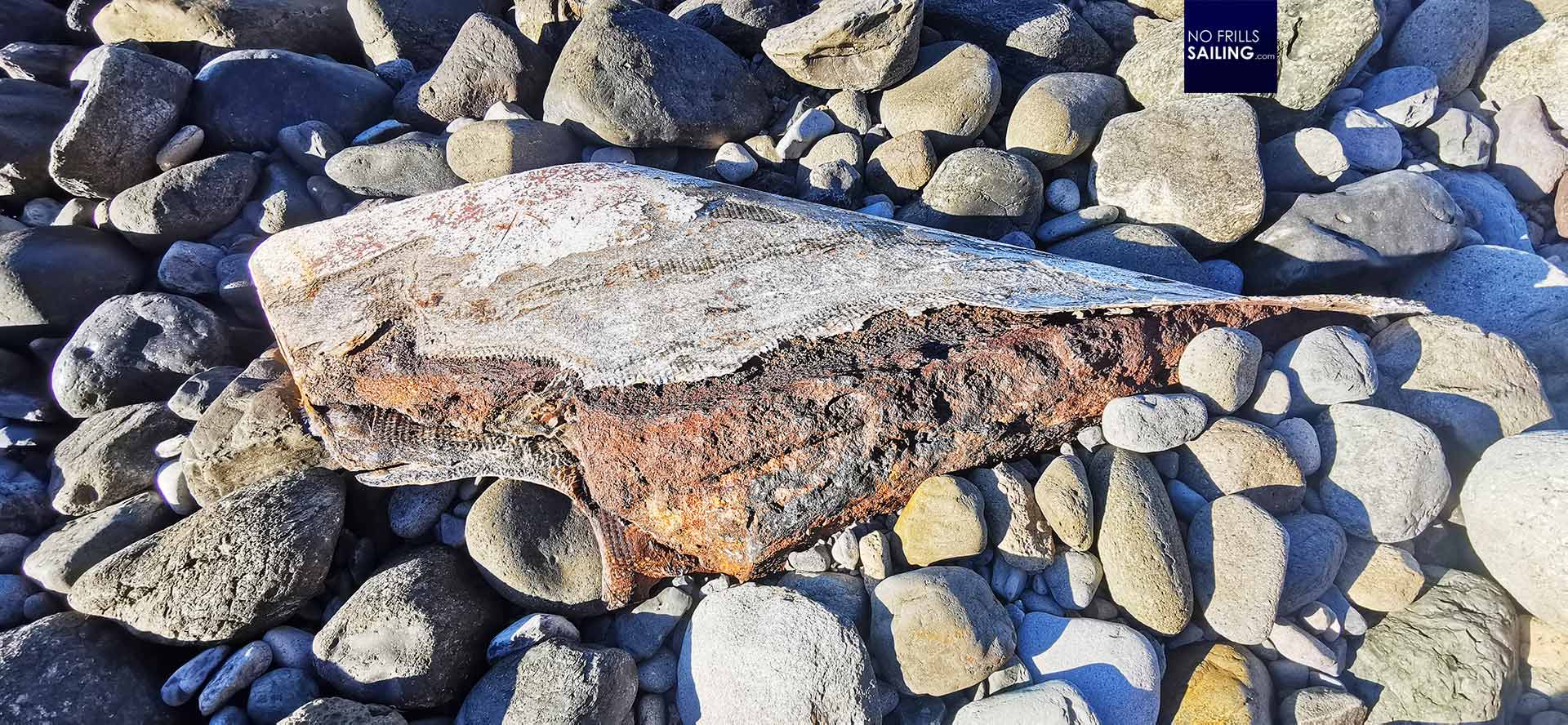
“But where is the rest of the boat?”, my kids asked. Well, I urged them to try and lift the keel. Which of course they weren’t able to move it just a millimeter. I explained that probably the sailboat to which this keel once belonged was grounded here. Maybe in a violent storm, my kids imagined. Or it was just drifting here, long time abandoned. A kid´s imaginary world knows no boundaries, and so they started a kind of competition to come up with possible explanations of how the boat might have ended up here. But where is the rest of it?
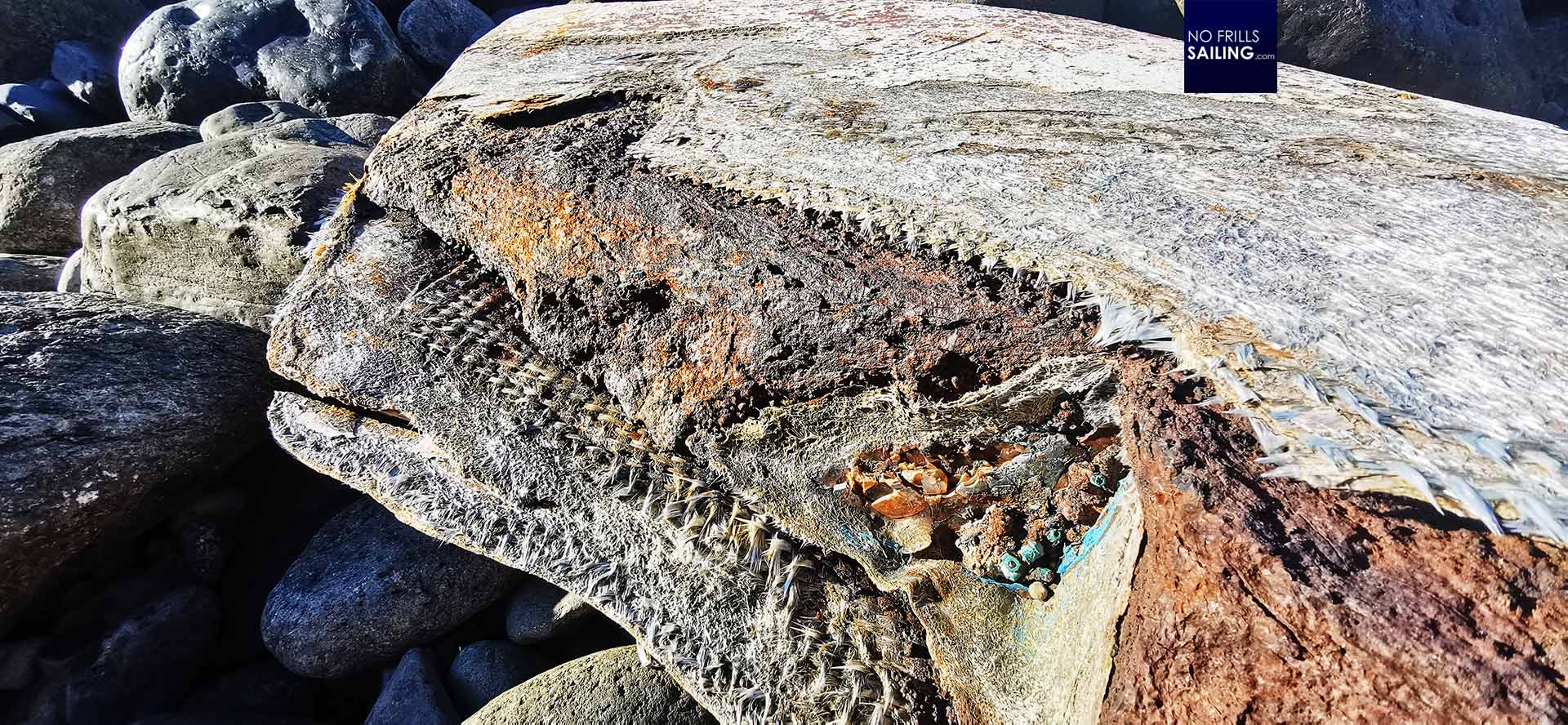
As – especially in classy boats – approximately 40 to 50 per cent of a boat´s mass is located in the small, but extremely heavy keel, the rest of the boat´s mass is the visible part. This could either have been salvaged and taken away for scrapping and recycling or it simply sunk down, dispersed over the whole stretch of the beach. “Did the crew die?”, my boys ask. Well, that I don´t know, but grounding and beaching a boat on a rocky coast like this is extremely dangerous and might possibly end in injury and even death, I told them. But I finally came up with another theory.

So near, yet so far away …
“Remember what we talked about yesterday night when we watched the boats at anchor here in front of Pacito Blanco?”, I asked. They nodded. No boat has had their anchor lights activated. We stood at the harbor´s entrance, looking toward the very beach where we had found the torn off keel: So near, yet so far away. It could have been that this boat was also anchoring here, no light set. Maybe another vessel, during a stormy dark moonless night, tried to enter the marina. Didn´t see the boat blocking the entrance, ran over the anchor chain, snapped it, the small boat drifted ashore to its destiny … maybe?
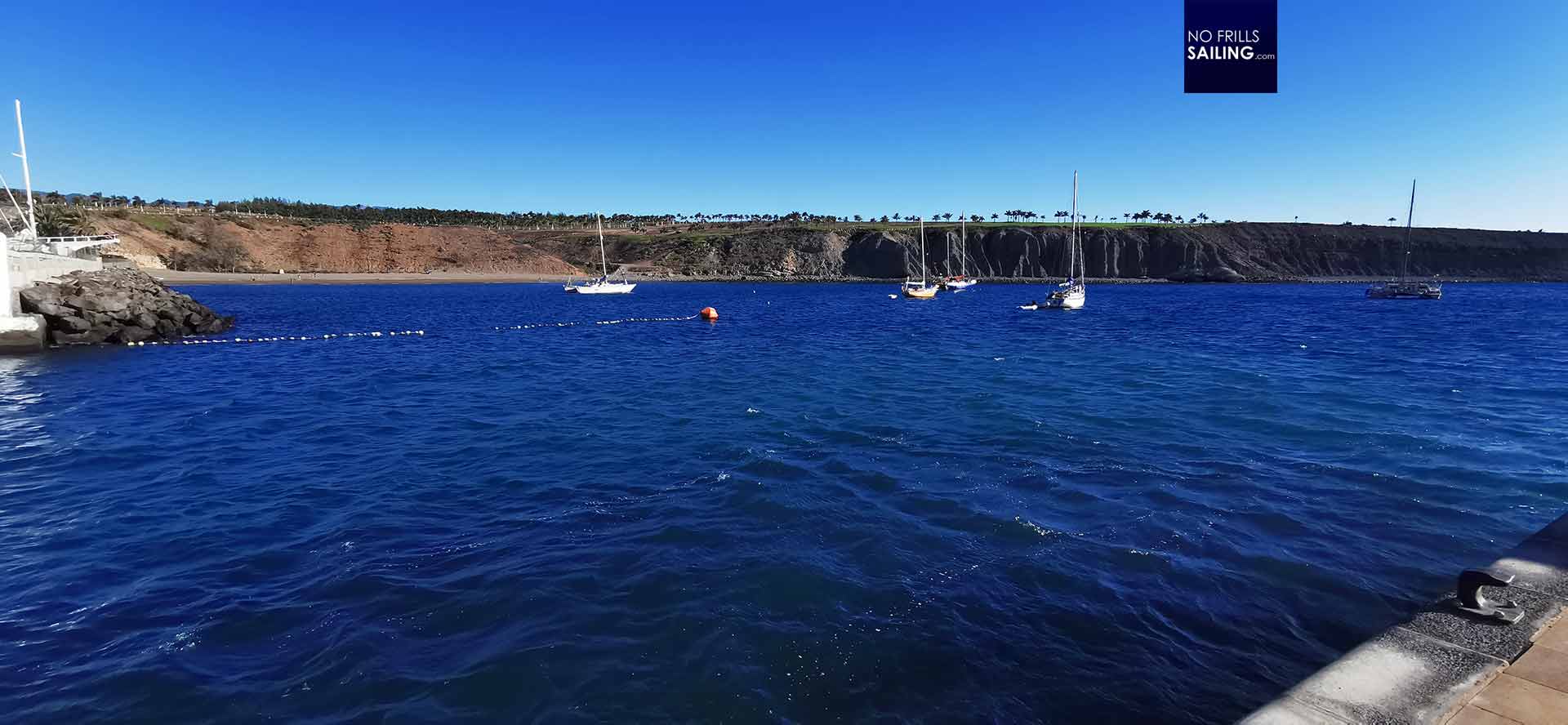
So, what have we learned today? At first that even in a safe anchorage, vigilance and adherence to common sense rules are important. That Colreg and other rules have been developed over centuries of seafaring and – sadly – most of them are learnings from uncounted desaster. We have also learned, again, how incredibly strong nature is, how violent a nice blue ocean can be that it can rip apart massive metal, crush boats to tiny pieces and cause destruction. On our hike back my kids talked about the keel, back at home, took out their crayons and began drawing some pictures of what might have happened to the boat on that fateful stormy night some months ago …
You may like to check out these related articles:
Stellar navigation for kids
Sailing the Canary Islands
Arriving at Lanzarote


